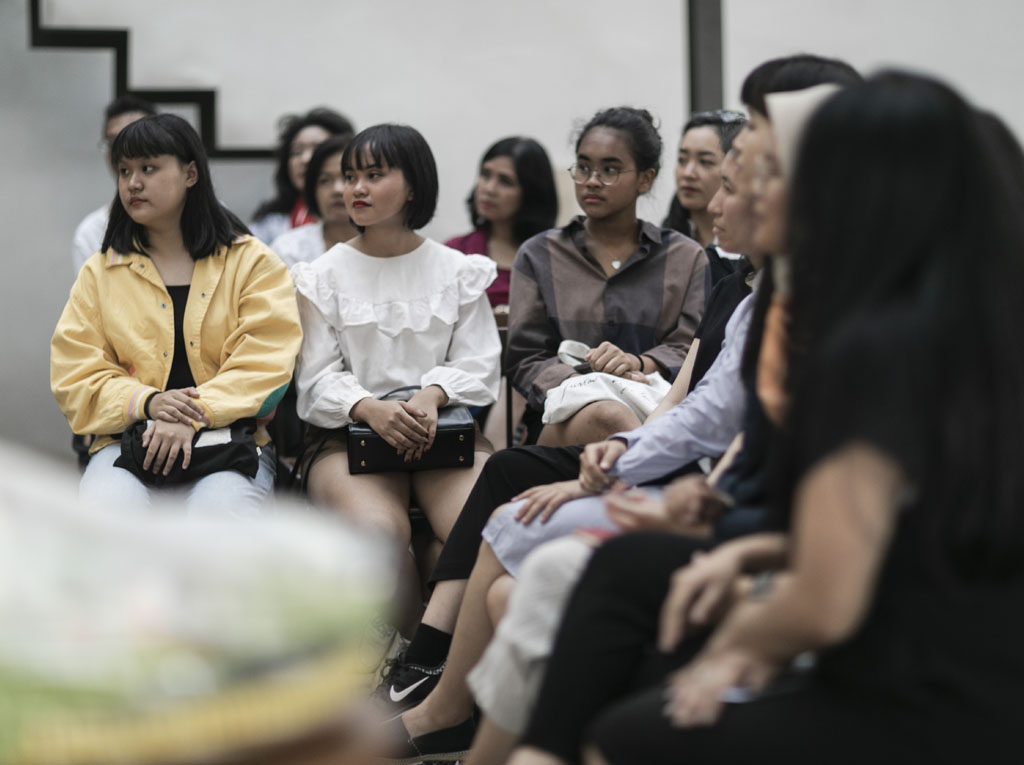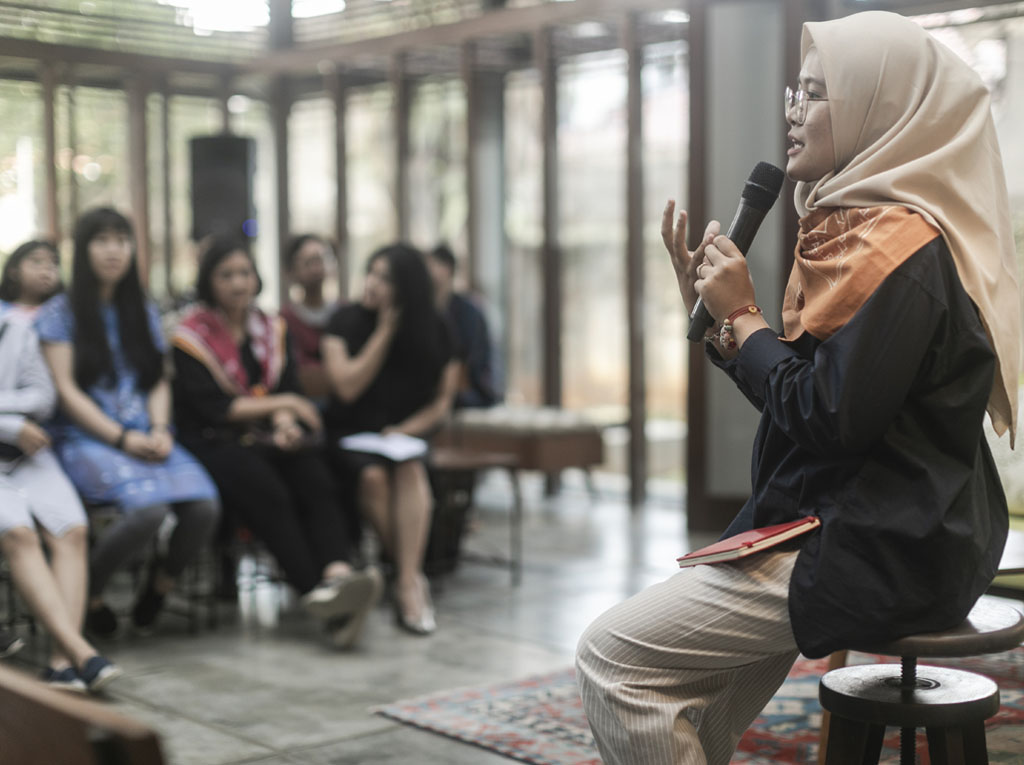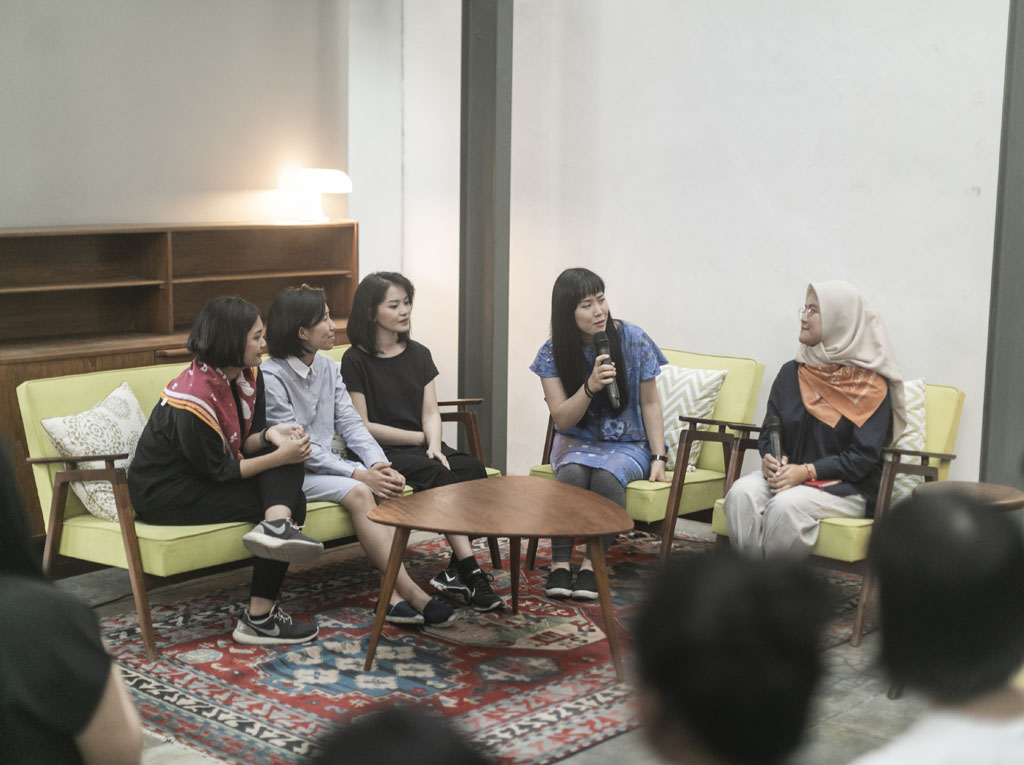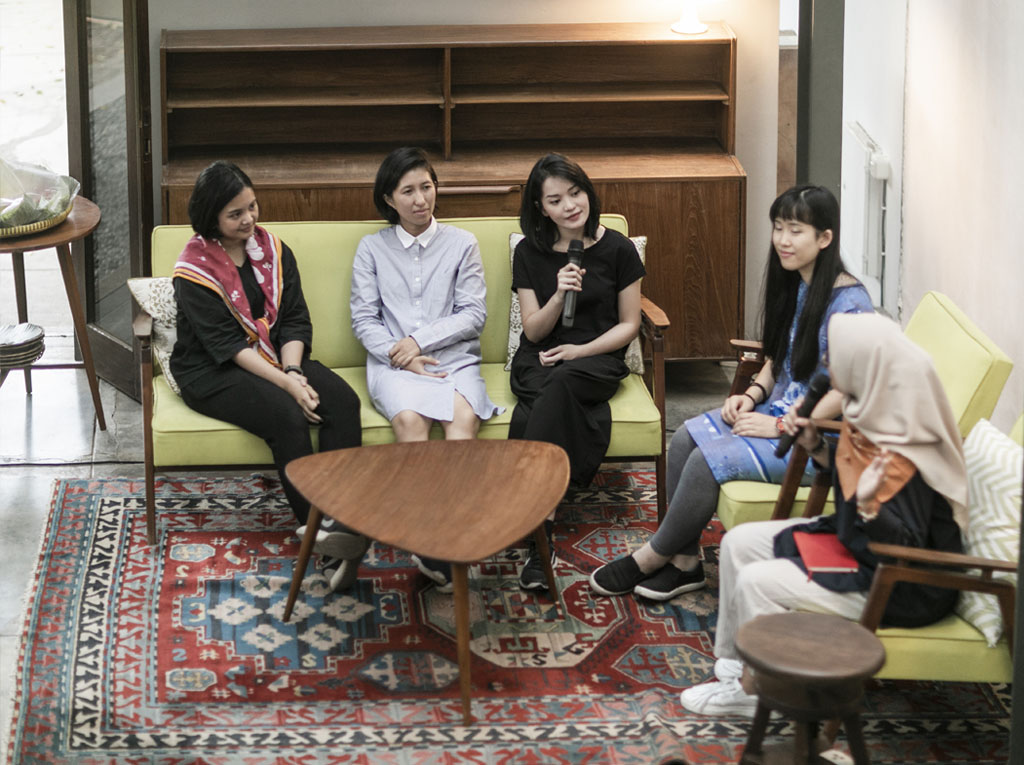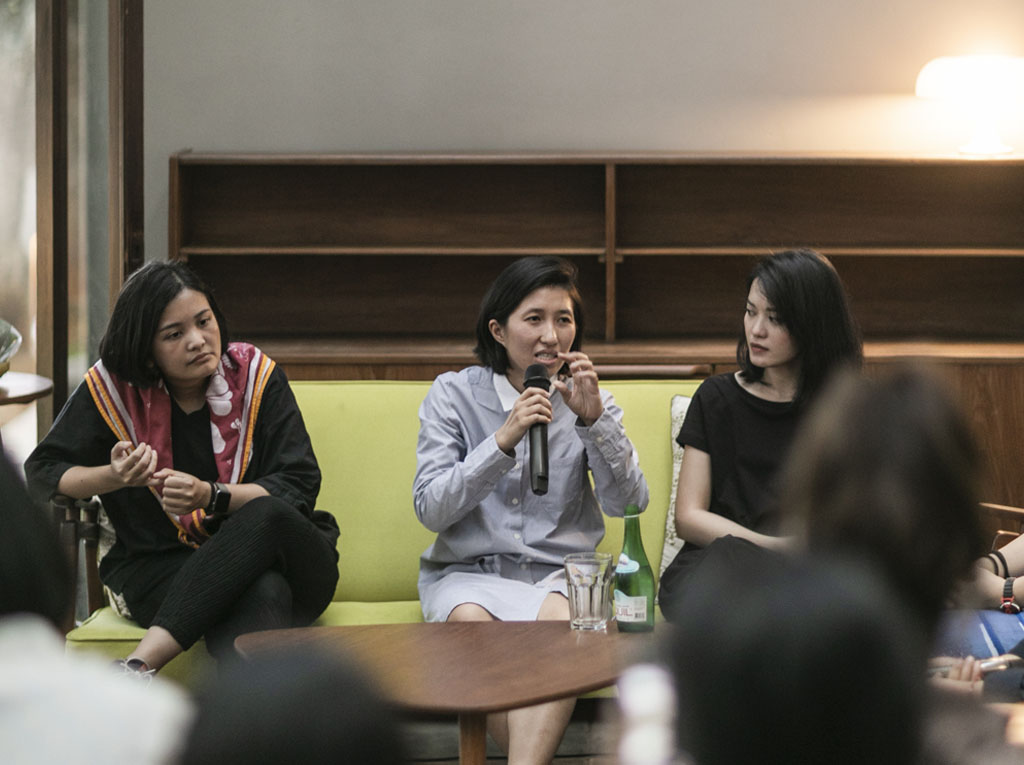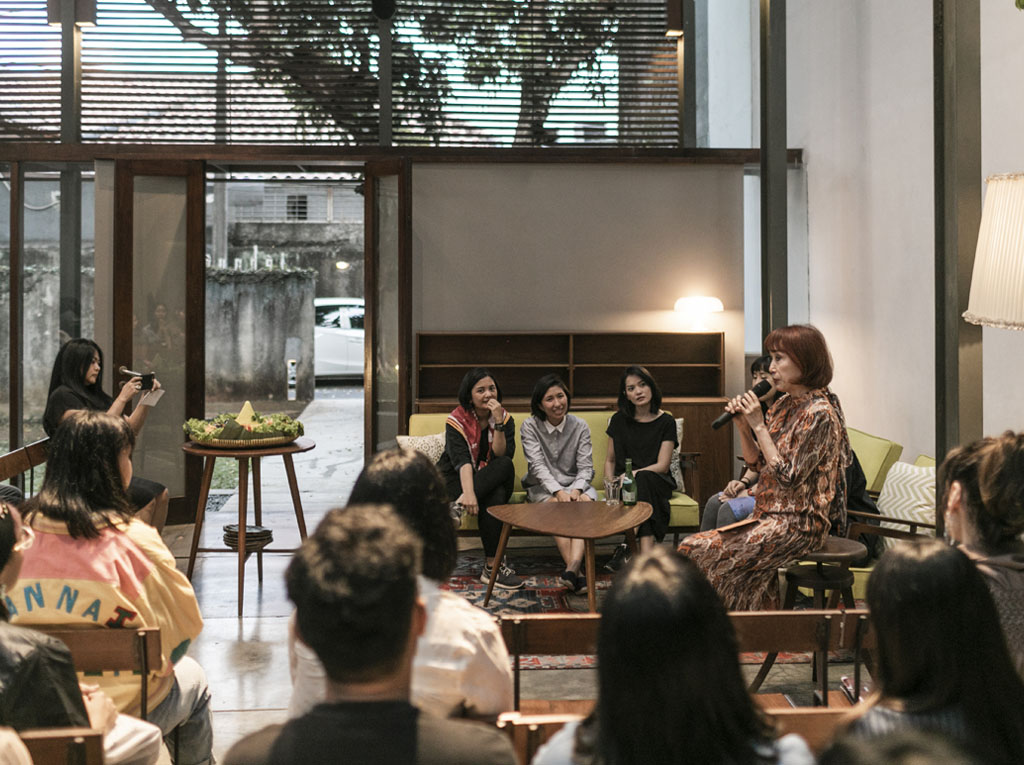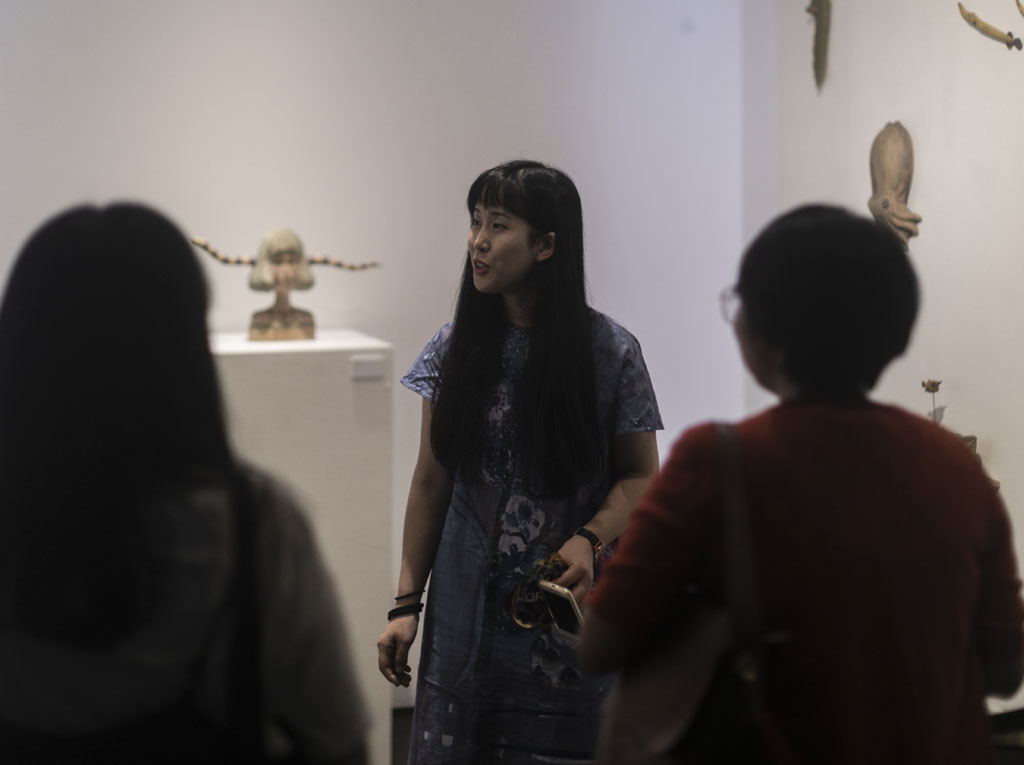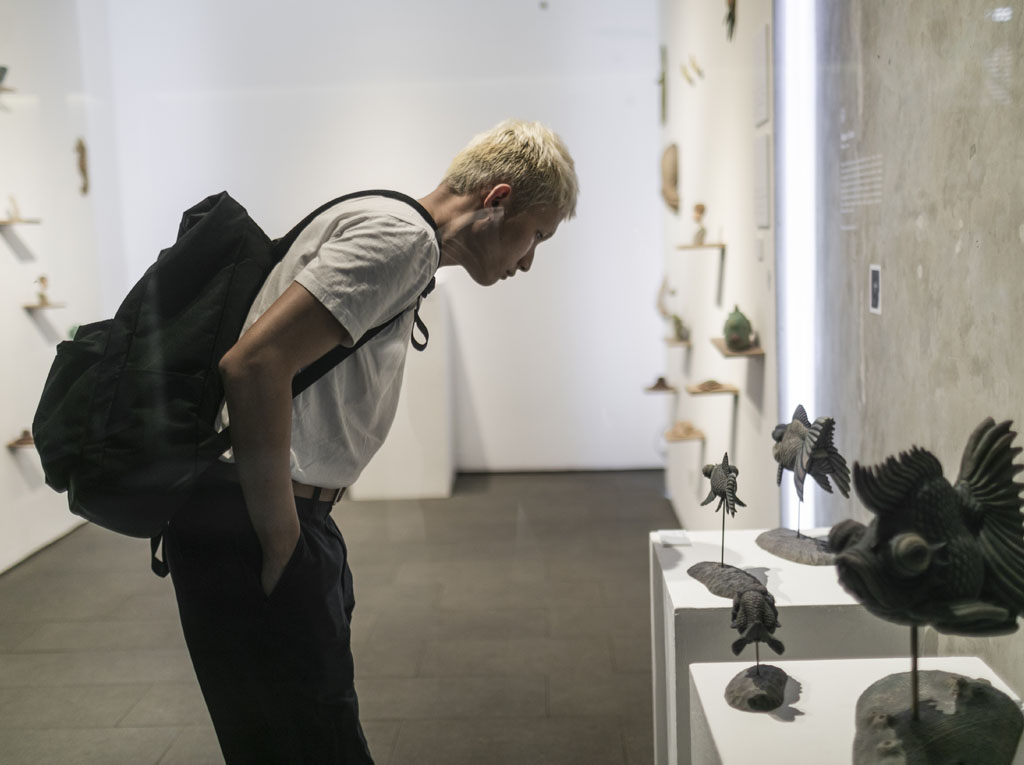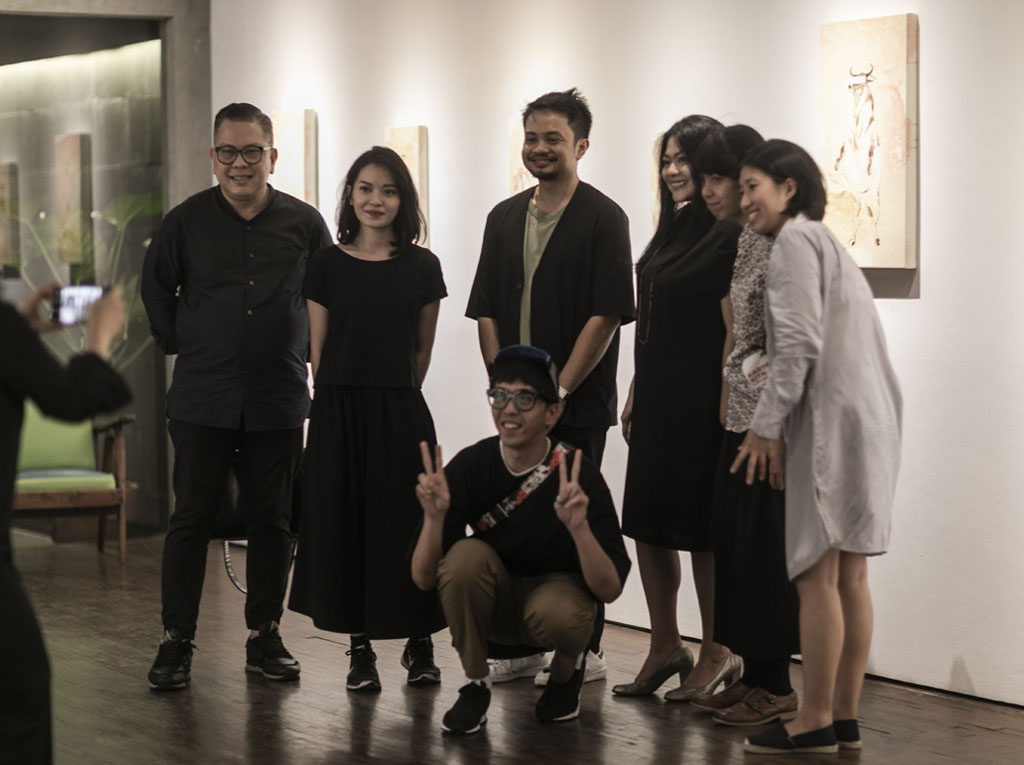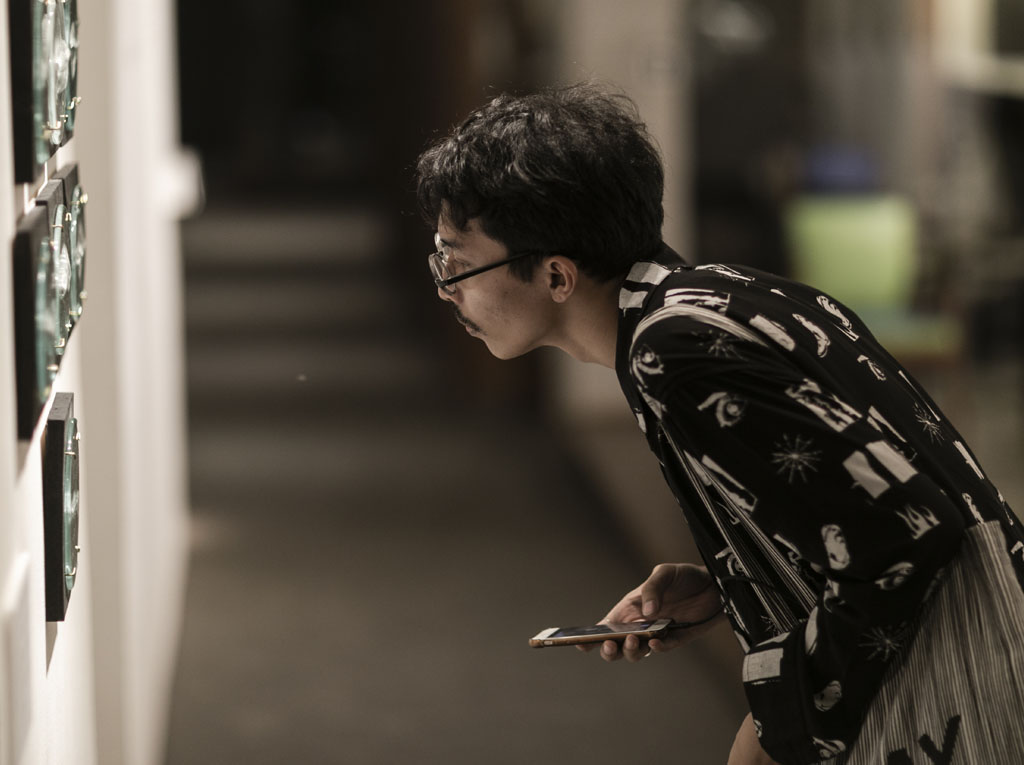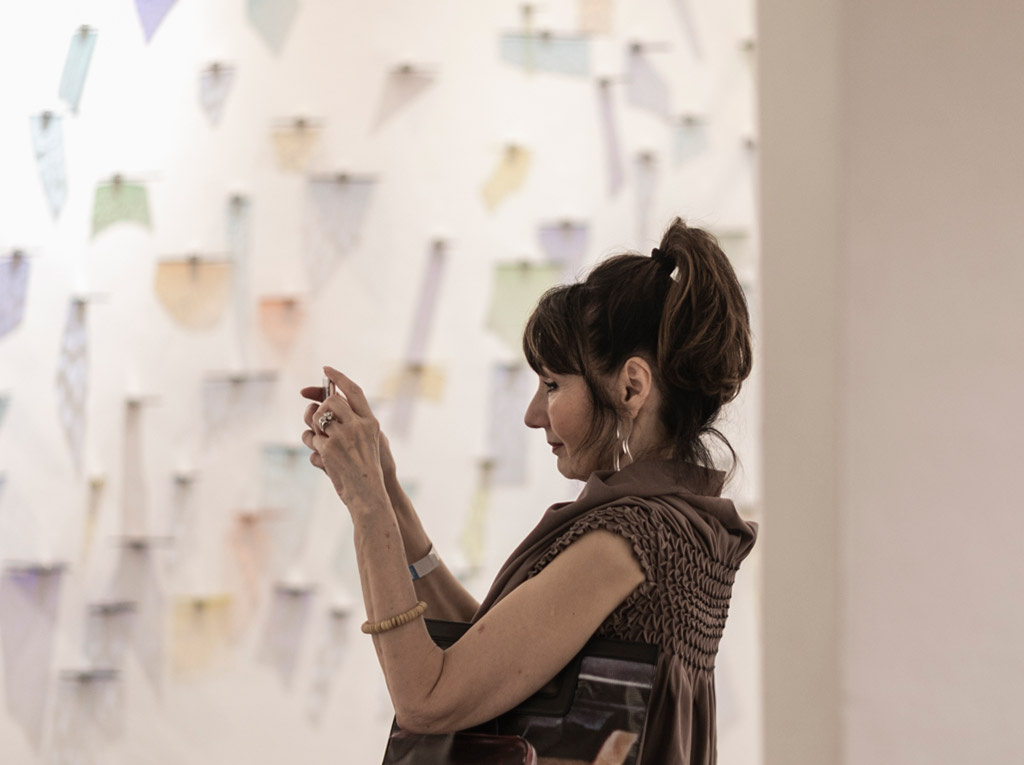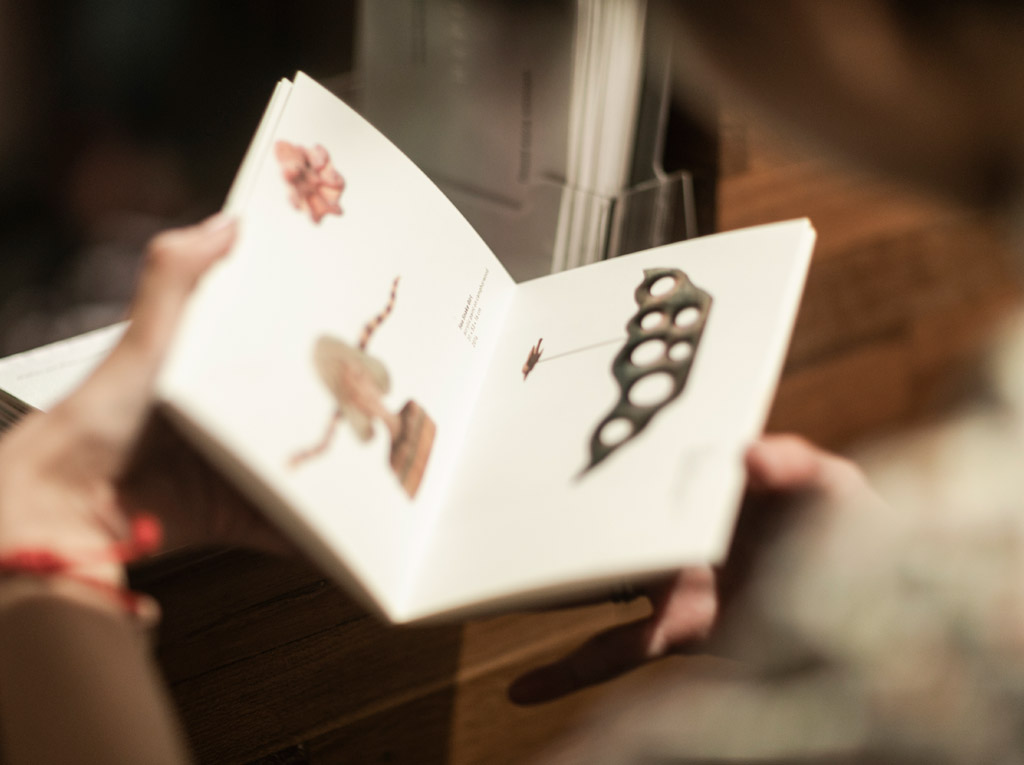Retrospect. Repose. Redefine.
Artist Talk & Opening Exhibition
In a journey of an artist, one often finds themselves being on a certain path and wanting to look back and retrace. Its sole purpose is to figure out where and how to continue. It requires introspective skills, yet to truly see inward is quite terrifying especially when done in front of public eyes. What would we see? What is important in our life? Have we achieved it? Where would we go afterwards? What would people around us think?
To name this a ‘transition’ would be too pretentious; perhaps nothing significant would change. However, creating an intimate space where one can repose and being witnessed during this retrospective process at the same time offers a widened perspective. It is the power of being seen that accelerates the internal meaning making. When one seeks towards the innermost part of the self, it is somewhat easier to be misguided by one’s own biases which sometime even triggers a more vague idea. Whereas going through the process with a witness helps bring out the animated self-dialogue through exchanging thoughts, expressions, and gestures.
The purpose of this space is to unearth and map out the artist’s existing practice and create an opportunity to redefine its trajectory. It might not be experimental as such, but it should be safe enough for them to comfortably explore the uncharted territories. Towards the end, the artists used the method of “Aesthetic Analysis” (Knill, 2014)[1] to better understand their own practice and where they are currently at. The stages comprise questions about the artwork, artmaking process (including emotional responses and obstacles), title, and message from the artwork.
Cinanti focused on the subject matter that keeps recurring on her artworks. In her artistic journey, the animals she brought forward have been a lot of things but themselves. They have embedded different symbolisms that center around “the other”; entities outside of herself who had significant impacts on her life. On the current artworks, she intentionally wanted to present them as they are. Animals as animals, without any anthropocentric allegories. However, in revealing each animal, she found that it was still necessary to keep the layers of the translucent watercolor-like paints, as if on each one lies a different exploration on identity. By doing this, she deliberately asks if we can see things as they are and not as how we want to see them.
Patrice’s interest in glasswork found its roots in the early days of her career. Her intimacy with the material is undoubtedly visible throughout her artworks. She has been using glass to express ideas and contain different questions she met along her life. Her artwork is a continuity from her reflections on using glass. She has arrived at point where the work is not the only focus; she began to question the leftover pieces of glass. The parts that she had to remove while she was creating something that is seemingly more meaningful. She wanted to explore different possibilities, what if the pieces she purposefully cut out could have meaning, too? Can her artistic endeavor generate more values and less debris?
Mindful practice can be found throughout Maharani’s artistic journey. Her exploration on subject matters and materials can be traced in a systematic way since the beginning of her career. Her meticulous approach has benefited her, as she stays on guard in every step of the way. In subject matters, she searches for relevant relations between her present self and past origin; creating a dynamic and meaningful timeline of narratives and emotions. Her search in materials is not any different. She believes that each material contains stories from the first time it was handled. By composing them to respond to a space, she wants to bring them out to be seen, sometimes touched, and appreciated. Both can be seen on the artworks strategically placed in the public space, where spectators can freely go in and out of her aspirations.
Haguri’s attraction towards wood stands the test of time. It was an affair that sparked between her skillful carving and the warmth of the material. She articulated the ideas of humans’ position in nature by juxtaposing them, in forms of different creatures, on her artwork. Her narrative is not forceful, but rather dreamy, as if to show that a unison between human and nature can be light and transcendental. She purposefully brings her artworks to life as grateful children for the stories she unveils.
As with life in general where everything seems to pass by too quickly, this exhibition is an effort to slow down and reconnect with each artist’s beliefs and interests. The artworks should not only be an evidence of the artistic process, but also an invitation for the audience to take a step back from what has always been seen as a routine, reevaluate it so that it becomes more meaningful, and redefine themselves in the role they play day in day out.
[1] Knill, P.J. (2014) “Foundations for a Theory of Practice” in P.J. Knill, S. Levine, and E. Levine Principles and Practice of Expressive Arts Therapy London: Jessica Kingsley Publication.
artists:
Haguri Sato
Maharani Mancanagara
Cinanti Astria Johansjah
Cecilia Patricia Untario
curator:
Ardhana Riswarie
opening exhibition:
Sat, 24 Aug 2019, 4.30pm
Dia.Lo.Gue
Kemang Selatan 99a
Jakarta 12730
officiated by:
Dr. Melani Setiawan
exhibition period:
24 Aug – 20 Sep 2019
open for public
supported by:
@manualjakarta @indoartnow @whiteboardjournal
photograph by RIOP
